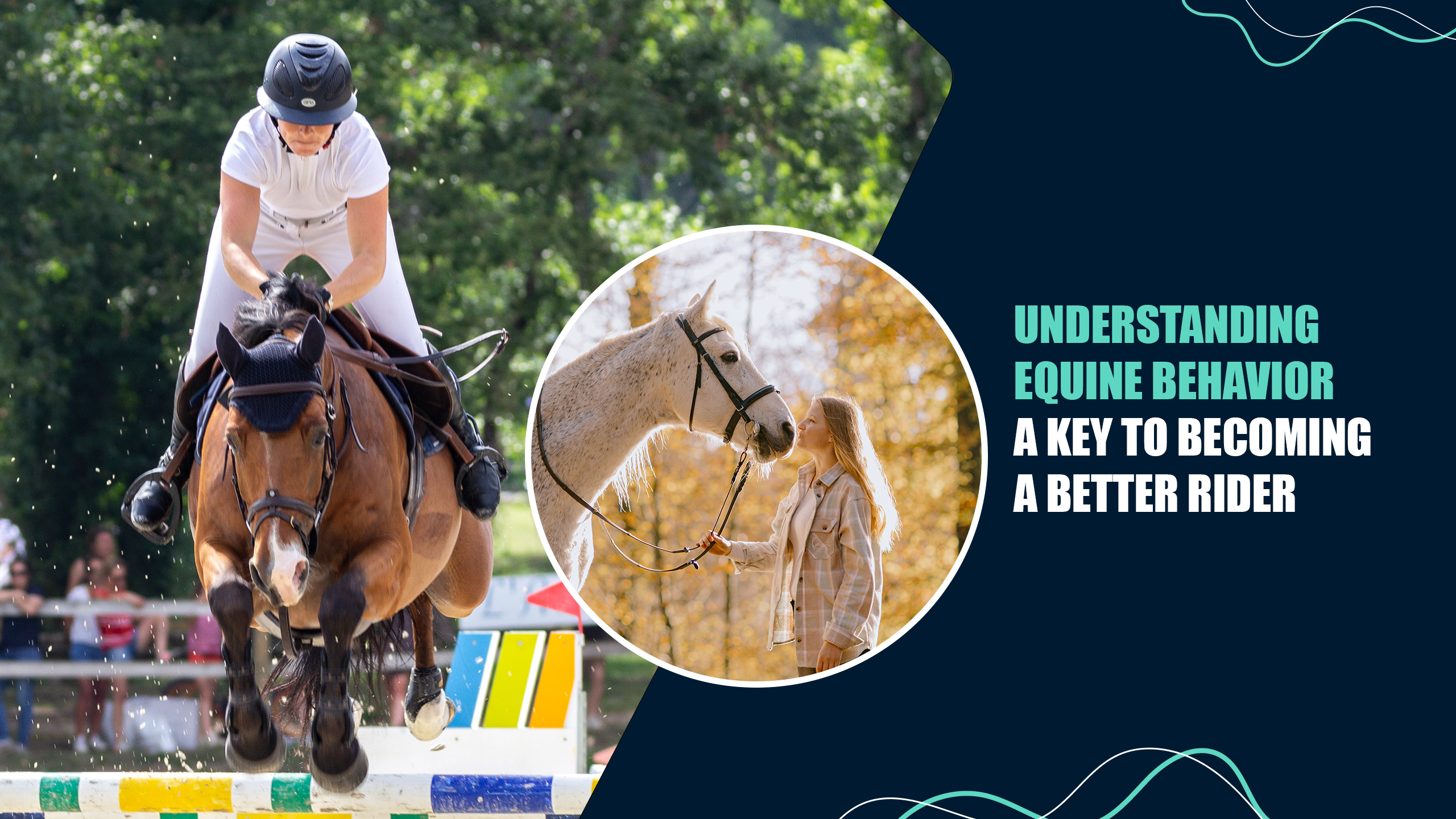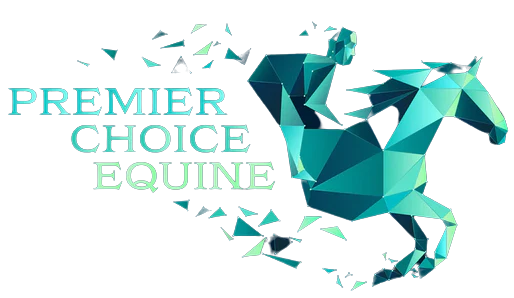
Becoming a good, or even a great, rider goes beyond mastering riding techniques. It helps if you can create a strong bond with your horse, and understanding equine behavior is the linchpin to unlocking additional riding powers.
Horses are intelligent and perceptive beings, and they communicate through nuanced body language and instinctual behaviors honed over centuries as prey animals.
Delving into the intricacies of their innate survival instincts can reveal how you can improve your riding performance. This blog is your gateway to a deeper connection with your equine partner, where trust is forged, rapport flourishes, and the synergy between horse and rider transforms the ordinary into an extraordinary riding experience.
The Importance of Understanding Equine Behavior for Riders
Riders who possess a deep understanding of equine behavior have a significant advantage when it comes to achieving optimal riding performance. By deciphering the code of equine behavior, you can anticipate your horse's reactions and respond accordingly, leading to smoother and more effective communication between you and your horse.
Moreover, understanding equine behavior allows you to establish trust and rapport with your horses. Horses are social animals that thrive on connection and positive relationships. By effectively communicating with your horses and respecting their natural behavior patterns, you can build a strong bond based on mutual trust and respect.
Common Behaviors Exhibited by Horses During Riding
During riding sessions, horses may exhibit various behaviors that riders should be familiar with. One common behavior is "spooking," where the horse suddenly becomes startled or frightened by something in its environment. This behavior may be triggered by unfamiliar objects, loud noises, or sudden movements. You must remain calm and reassure your horse in such situations to prevent accidents and maintain control.
Another behavior you often encounter is "bucking." This behavior involves the horse forcefully kicking out its hind legs, usually in response to discomfort or frustration. Bucking can be dangerous for both the equine rider and the horse, so it's important to identify the underlying cause and address it promptly.
Additionally, horses may display behaviors such as "head tossing," "tail swishing," or "ear pinning," which are all forms of communication. These behaviors can indicate discomfort, pain, or irritation, and you should pay close attention to them to ensure the horse's wellbeing.
Communication Techniques for Riders to Establish Trust and Rapport with Their Horses
Establishing trust and rapport with a horse is a crucial aspect of riding. To achieve this, riders must employ effective communication techniques that resonate with the horse's natural behavior. One such technique is using body language to convey messages to the horse. Horses are highly perceptive to subtle cues, so you should be mindful of your posture, position, and gestures.
Another communication technique is the use of voice commands. Horses can learn to associate specific vocal cues with desired actions or behaviors. By consistently using the same commands, you can establish clear communication with your horses and facilitate understanding.
Furthermore, you can utilize positive reinforcement techniques, such as rewards and praise, to reinforce desired behaviors. Horses respond well to positive reinforcement, and it helps create a positive and harmonious horse riding experience.
Recognizing Signs of Discomfort or Stress in Horses During Riding
As riders, it is essential to be vigilant and attentive to signs of discomfort or stress in our horses. Horses cannot verbally communicate their discomfort, so it is our responsibility to recognize and address it promptly. Some common signs of discomfort include changes in behavior, such as excessive tail swishing, pinned ears, or resistance to cues.
Physical signs of discomfort may include tension in the muscles, sweating, or an irregular gait. You should also be aware of any changes in the horse's appetite, as it may indicate an underlying health issue.
When a horse displays signs of discomfort or stress, it is crucial to investigate the root cause. It may be related to ill-fitting tack, physical discomfort, or even an issue with your riding technique. By addressing the underlying cause and making necessary adjustments, you can ensure the horse's wellbeing and prevent further behavioral issues.
Strategies for Addressing and Correcting Behavioral Issues in Horses
Addressing and correcting behavioral issues in horses requires a patient and systematic approach. It is crucial to first identify the root cause of the behavior problem and then develop a tailored plan to address it.
One strategy is to gradually desensitize the horse to the triggers that cause undesirable behavior. This involves exposing the horse to the trigger in a controlled and gradual manner, allowing them to become more accustomed to it over time. This technique can be effective for horses that spook or become anxious in specific situations.
Another strategy is to establish clear boundaries and consistent routines. Horses thrive on structure and predictability, so having a consistent training regimen and clear expectations can help prevent and correct behavioral issues.
In some cases, seeking professional help from an experienced trainer or equine behaviorist may be necessary. These experts can provide guidance and develop a customized training plan to address specific behavioral issues.
The Role of Equine Psychology in Riding Performance
The psychology of the horse plays a significant role in the performance of the equine rider. It involves understanding how horses think, learn, and process information. By understanding equine psychology, you can tailor your training methods to suit the horse's individual learning style and maximize your potential.
Furthermore, understanding equine psychology allows you to effectively manage and modify behavior. By addressing the underlying psychological factors contributing to behavioral issues, you can implement appropriate training techniques and create lasting behavioral changes.
Tips for Improving Riding Performance Through Better Understanding of Equine Behavior
Improving your horse riding performance requires a comprehensive understanding of equine behavior and effective application of that knowledge. Here are some tips to enhance riding performance through better understanding of equine behavior:
- Expand your knowledge on equine behavior through literature and workshops for effective communication.
- Practice patience and consistency in training, as horses learn through repetition and clarity in cues.
- Strengthen your bond via grooming, groundwork, and quality time for optimal riding performance.
- Listen to your horse, promptly addressing signs of discomfort to prevent behavioral issues.
- Seek professional guidance from trainers or behaviorists when encountering challenges for valuable insights.
Conclusion
For riders aiming for peak performance, delving into equine behavior is paramount. Deciphering this unique code enables the establishment of trust, fostering effective communication and cultivating a harmonious riding experience.
From discerning signs of discomfort to addressing behavioral nuances, you can elevate your performance and forge a strong connection with your horses. This journey involves unlocking the true potential of equine partners through a mutual understanding that transcends skill levels.
Regardless of your horse riding experience, investing time in comprehending and appreciating your horse's behavior is a transformative step toward enhanced performance and a deeper, enduring bond.
Explore our curated collection of insightful blogs and expert tips to enhance your equestrian journey.